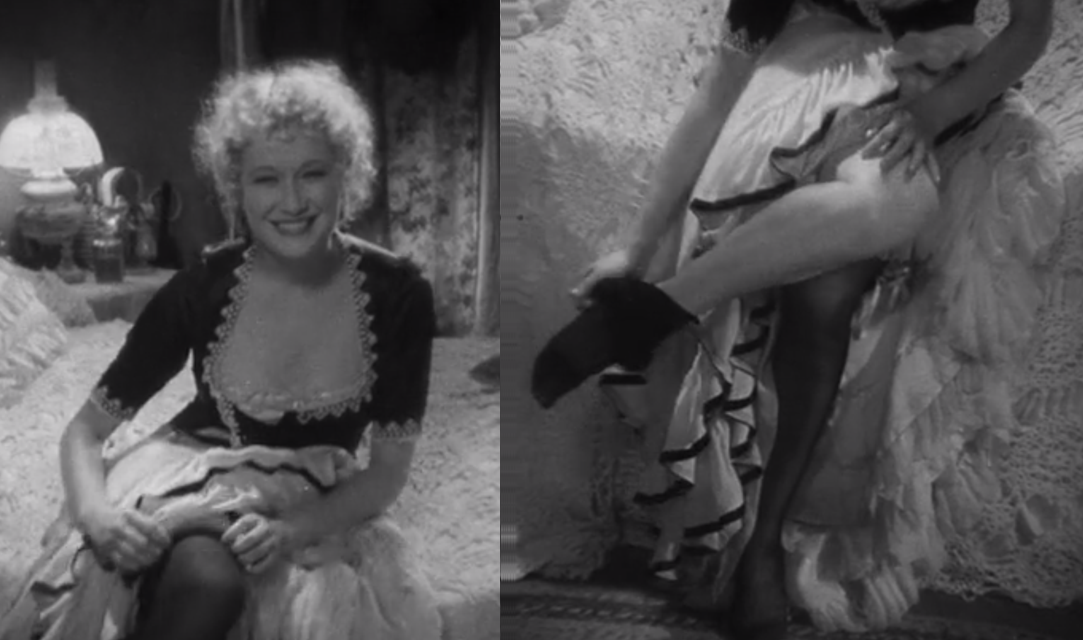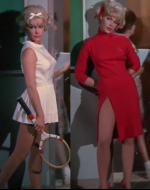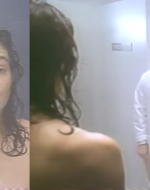Created by Jake Seitz on Tue, 11/22/2022 - 22:06
Description:
How do adaptations of Jekyll and Hyde portray the concept of scopophilia using women?
Introduction:
Scopophilia, or the love of looking, is a concept which has been meddled with in the film industry since the latter’s inception. According to Laura Mulvey, Sigmund Freud denoted that males have a tendency to objectify women in their minds, “subjecting them to a controlling and curious gaze” (Mulvey 59). Referred to by Freud as the male gaze, scopophilia can provide some interesting insights into the minds of film directors, cast members, or even the audience’s intended reaction, to and about sexually exciting images. Sometimes the male gaze is taken a step further, in the form of a male and female engaging in sexual activity, voluntary or not. The famous story, Robert Louis Stevenson’s Strange Case of Dr Jekyll and Mr Hyde, has been adapted to screen many times over the decades, and though the book has no female relationships in it, the films famously throw this concept out the window. A noticeable change from one film to another is the amount of sexual activity or even seduction shown, which is because of the Production Code. According to Jessica Metzler, the Production Code was a set of “prohibitive guidelines intended to keep film producers from running afoul of state censorship boards” (Metzler 34). Though established in 1930, its effectiveness didn’t show until 1934. Until then, filmmakers could get away with much more in terms of sexual and violent content. But even when the production code was in effect, filmmakers found ways around it. And when it was abolished, some films took advantage. But perhaps the most noticeable difference in the films below is the role of the woman. In these films, the audience, as well as some characters, have the ability to see the woman and be excited by her presence, no matter how much of her is revealed. Who the woman is though, changes. Some versions, she’s Jekyll’s love interest, and in some cases, she’s Hyde. But in all cases, there is a woman who is noticeably objectified by a male on screen, which never occurs in Stevenson’s novel.
Image 1:
1931 - Dr. Jekyll and Mr. Hyde - directed by Rouben Mamoulian
Ivy Pearson after being rescued by Jekyll - POV shot
Ivy is a significant character in the 1931 Mamoulian adaptation. She’s pictured here on a bed, beginning to undress for Jekyll whose POV is this shot. Ivy, being one of two female characters in the story who Jekyll has relationships with, is symbolic of the male gaze, fantasizing over women and objectifying them. Laura Mulvey writes this concept thoroughly in her work, “Visual Pleasure and Narrative Cinema”, by stating, “Woman displayed as sexual object is the leit-motif of erotic spectacle: from pin-ups to strip-tease, from Ziegfeld to Busby Berkeley, she holds the look, plays to and signifies
male desire” (Mulvey 62). In films such as this, it’s a woman’s job to be a pleasure for male viewers, who can use these moments which interrupt the story, to briefly pursue their deeply seated fantasies. But, Ivy doesn’t just do this for the audience: she does it for Jekyll, of course. Jekyll has two lovers in this film: Muriel Carew, his intended fiance, and Ivy. Each one represents one side of the brain’s reaction to women. Muriel represents the rational, civilized left brain, which Freud calls the Super-Ego, and Ivy represents the fantasy of the right brain, the creative, ambitious, outgoing side. This film was made before the prevalence of the Production Code, so in this shot she’s seen playfully undressing in front of Jekyll, and later gets into bed, hoping Jekyll will keep his attention on her. Of note, even a shot of a woman getting into a bed was a “Don’t” of the Production Code. Some other things in this shot worth mentioning are the dim lighting, another trait of sexual scenes, and the all-white linens of the bed, suggesting childlike innocence and purity.
Image 2:
1963 - The Nutty Professor - directed by Jerry Lewis
Julius Kelp’s POV of Stella standing at the door of the classroom
Here is a collection of outfits Julius Kelp imagines Stella wearing as she stands waiting to leave the classroom. It’s another POV shot, just like in the Mamoulian Jekyll and Hyde. This one has a major difference from the first though, which is that the Production Code was in place during this movie’s production, so Jerry Lewis portrayed Stella’s appeal to a lesser degree, no sexual activity is ever shown, and the most intimate they get is a kiss. The most that’s ever shown of Stella’s body is her legs, and she’s never in bed on screen with Kelp. But still, this shot is a product of the male gaze, with Kelp’s mind objectifying Stella and manipulating her into how he desires her: one athletic outfit, one late night dinner outfit, etcetera. Each one is a little more revealing, but they never get past the legs. Also of note is the color of each outfit, which represents the emotion or environment of its intended setting, like yellow for a warm date in the evening or blue for the ocean and beach. There’s also a dramatic shadow on the background with hard edges, and the music changes each time to set the tone, like jazz music with the red dress. Despite the Production Code, Lewis found a creative way to portray Kelp’s attraction to Stella and his longing gaze. This movie’s tone goes with a concept mentioned by Charles King in the appendix of Stevenson's text which is that sometimes in the adaptations, Jekyll will find a woman attractive, but he “cannot approach because of their difference in status” (Stevenson 159). Kelp’s a teacher, and Stella’s a student, so their relationship would be quite taboo, so Kelp resorts to all he can do.
Image 3:
1995 - Dr Jekyll and Ms. Hyde - directed by David Price
“Helen Hyde” getting out of the shower to find the lab assistant
This film takes advantage of the production code being gone. Though her naked chest isn’t shown, everyone can see that it’s right below the frame, and the assistant is in full view. His face represents the stereotypical male gaze, with full concentration, no response to anything else, gaping mouth, unblinking stare. The bright light behind him is inadvertently helping illuminate her chest. She literally asks if he plans to stare at her longer or hand her a towel, and after hesitating he says “I’m gonna keep staring at you.” The film is also one of the few that turns Jekyll into a woman after transforming, so the male gazing isn’t done by the Jekyll character, but rather the audience, harking back to the idea of women being used as sources of pleasure for male viewers. This is mostly used as a comedic gag though, as Jacks (jekyll) is constantly transforming before switching clothes, making for an extremely awkward situation.
According to Laura Mulvey, what’s often the case is that man “cannot bear the burden of sexual objectification. The man…emerges as the representative of power in a further sense” (Mulvey 63). This film, of course, breaks that “rule”. Though Jekyll is a man, Hyde is a woman, and in the position she’s in, being good looking, she has considerable power, manipulating men rather than a man manipulating a woman. The perspective is swapped. Why a gender twist at all? David Price wanted not only to make fun of Stevenson, but introduce the story to a whole new audience.
Image 4:
1971 - Dr Jekyll and Sister Hyde - Roy Ward Baker
“Sister Hyde” staring down Professor Robertson
Considered by fans to be the most original take on the story that Hammer Films produced, Dr Jekyll and Sister Hyde is another gender-swap take on the Stevenson classic. But the main difference here between this and Ms. Hyde? Sister Hyde is a killer, just like male Hyde was in the 1931 version. Here, Sister Hyde looks very seductive, with the red clothing, dark environment and dim light, but it’s much more of a dangerous tone than Ms. Hyde ever was. It makes sense, considering this is a horror film, and Ms. Hyde was more comedic. Laura Mulvey talks about the anxiety brought on by the sight of a seductive woman, a good reason for the male gaze to be brought on. She states that because a woman is sexually different, lacking a penis, she “always threatens to evoke the anxiety [the male gaze] originally signified” (Mulvey 64). In this case the anxiety is especially threatening, putting even the male viewer in a fight-or-flight state of mind because of the tone, and the dark colors, and the context hints. He knows she’s dangerous, but has no idea how to react, so he can only stare. And in this case, Robertson stutters and shudders, and Hyde talks with confidence.
Works Cited:





